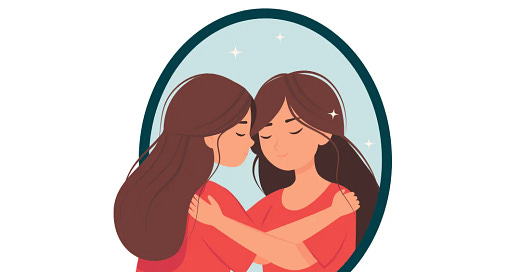As a therapist working with ADHD women, I hear it all the time:
“I try to remember. I really do. But reminders just… don’t work.”
You’re not failing. And you’re definitely not alone.
The truth is, most traditional strategies miss how ADHD brains actually function.
That’s why body-based, sensory-aware reminders have a better shot at sticking — especially when your brain is juggling relationships, emotions, work, overstimulation, and a million open tabs.
😵💫 Why Do I Keep Forgetting?
You’ve probably tried them all:
Calendar alerts
To-do lists
Sticky notes
And still, things slip through.
This isn’t because you’re careless. It’s because your brain is protecting you — either by shutting out overload, or locking into hyperfocus on what matters most in that moment.
So let’s stop expecting your brain to “just remember.”
Let’s build a system it can actually work with.
❌ Why the “Logical” Advice Doesn’t Work
“Just set a reminder.”
“Just put it on your calendar.”
That kind of advice never worked in my ADHD household — and it likely hasn’t worked for you either.
A soft ping on your phone? Too quiet. Too easy to miss — especially if you're stressed, overstimulated, or deep in focus.
So what does get through?
✅ What Actually Helps ADHD Brains Remember
Different strategies work for different people, but these three upgrades give your brain a better shot:
A sound paired with movement
A visual in your direct line of sight
A pattern that connects to a physical action
These aren’t just “reminders.” They’re multi-sensory nudges that your nervous system feels and responds to.
🔁 Make It Sensory, Repetitive, and Environmental
👀 Use Reminders You See
Your body reacts before your brain has time to think. Make that work for you.
Try:
A vibrating watch
A full-screen alert that interrupts scrolling
A neon sticky note on your fridge
👉 But if you're sensory-sensitive, pick cues that feel gentle — not jarring.
🤲 Connect Reminders to a Physical Action
Movement builds memory.
So try this structure:
“When [cue happens], I [do this thing].”
Example:
“When my watch buzzes, I open the fridge — that’s where my meds are.”
Why it works: Your brain doesn’t have to remember — your environment reminds you.
Other ideas:
Leave your gym shoes by the door
Put your lunch bag on top of your purse
Keep your charger next to your meds
No fancy tools required — just thoughtful placement.
📦 A Real-Life Example: Ana’s System
Ana used to miss her meds most mornings — even with sticky notes and alarms.
Now, she’s changed her setup:
She wears a vibrating watch that buzzes gently at 8:00am.
Her pill bottle sits next to her coffee mug — something she grabs every morning.
A bright red sticker on the bottle cap gives her brain a visual pop it can’t gloss over.
☕ → Buzz → Color → Action.
That’s three layers of sensory cues:
✔️ Touch (vibration)
✔️ Sight (color + placement)
✔️ Motion (reaching for the mug = grabbing meds)
💬 What Actually Changed?
Ana didn’t “try harder.”
She stopped relying on memory and started designing her space to support her brain.
Now, her meds are part of her natural morning rhythm.
No more scrambling. No more shame.
✍️ Try It Yourself
What’s something you often forget — but really want to do?
✏️ ___________________________________________________
Which reminder cue feels most supportive to you?
☐ Something I can feel or see (buzz, color, placement)
☐ Something I link to a small action
☐ Something I put directly in my path
Design your new reminder setup:
✏️ ___________________________________________________ ___________________________________________________ ___________________________________________________ ___________________________________________________ ___________________________________________________ ___________________________________________________
💬 Reflect + Reframe
💡 “Forgetfulness isn’t a flaw — it’s feedback.”
🧠 “My brain needs cues, not criticism.”
💖 “If I miss it, I’ll adjust the system — not blame myself.”
✨ Final Thought
I hope this newsletter helped you understand why the usual advice — “just set a reminder” — often doesn’t work, especially if you’re neurodivergent.
These strategies aren’t about pushing yourself to be more productive or do more than you can handle. That’s not the goal here.
But sometimes, you do want to remember something that really matters — like taking your meds, drinking water, or showing up for yourself in small ways. And when that’s the case, you deserve reminder systems that actually work with your brain and body.
Gentle tools. No shame. Just support that makes sense.
👉Learn about the Flourish Model and Community Here
👉 Get into the group. Just put our name on the list for the next cohort here
👉 Check out the hormone-tracking guide if you still get your period here
👉 Therapist/coach curious about the Flourish model? Please! Get on the list for the next affordable coach training here.
Have a good weekend!
Kristen






This is really helpful! I hadn't noticed I use placement for remembering things. I keep my meds next to phone, so that I see them before I leave the house. I also put sticky notes in places that are obvious or out of place to draw my eyes to them.